Over the past year, the U.S. Food and Drug Administration (FDA) has approved several new indications for pediatric rheumatology, notably in pediatric psoriatic arthritis (pPsA), pediatric lupus nephritis (pLN), and systemic juvenile idiopathic arthritis (JIA). Most approvals leveraged an extrapolation approach, allowing efficacy data from adult populations to support pediatric indications when disease similarity is established, according to information presented on the final day of ACR Convergence in Chicago.
Recorded sessions at ACR Convergence 2025 are available on demand to all registered meeting participants through October 31, 2026, by logging in to the meeting website.

Emily C. Gotschlich, MD, from the Division of Rheumatology and Transplant Medicine, Center for Drug Evaluation and Research (CDER) at the FDA, first discussed the approvals of apremilast, guselkumab, tofacitinib, and subcutaneous belimumab.
Apremilast was previously approved for adults with active PsA and psoriasis and now includes pediatric patients aged 6 and older, with weight-based dosing and a titration schedule to minimize gastrointestinal symptoms. The extended-release formulation was also approved for pediatric patients weighing at least 50 kg, she noted.
“The IL-23 (interleukin-23) antagonist guselkumab was approved for pediatric patients aged 6 and older with active PsA and moderate to severe psoriasis,” Dr. Gotschlich explained. “Dosing is 100 mg subcutaneously at week zero, then every four and eight weeks.”
Tofacitinib (a Janus kinase [JAK] inhibitor) has been expanded to include pediatric patients aged 2 and older with PsA, using the same dosing as for polyarticular JIA, 5 mg twice daily. Subcutaneous belimumab is now approved for pLN down to age 5, with weight-based dosing and a pharmacokinetic (PK) extrapolation approach supporting efficacy.
“Extrapolation of efficacy is based on disease similarity, in which disease/response similarity is a continuum,” Dr. Gotschlich said. “When pediatric and adult diseases are highly similar, approvals may rely on PK bridging and safety data from related pediatric populations, sometimes without dedicated pediatric efficacy studies.”
For conditions with partial similarity, approvals may require controlled or descriptive efficacy studies and bridging biomarkers, she added, explaining, “The rheumatology community’s confidence in disease similarity is crucial for determining the appropriateness of extrapolation.”
The apremilast and tofacitinib approvals in pPsA were based on the similarity between adult and pediatric disease, supported by PK data and safety profiles from related populations, such as pediatric JIA and psoriasis, she explained.
Dr. Gotschlich also addressed the complexities of drug development for rare pediatric diseases, using the example of emapalumab for systemic JIA and hemophagocytic lymphohistiocytosis (HLH) as a case study.
There are several familiar challenges of drug development and rare diseases in pediatric rheumatology, Dr. Gotschlich said.
“One of these is the small patient populations, as rare diseases involve limited numbers of patients, making traditional clinical trials difficult,” she noted. “Also, the heterogeneous natural history of rare diseases complicates endpoint selection and trial design. Rare diseases are often serious, life-threatening, progressive with childhood onset, and lack radical, approved therapies. Thus, there are patients with urgent medical needs.”
Some regulatory approaches being implemented to overcome these challenges include the use of external control studies, real-world evidence, and emerging endpoint advancement programs.
“The FDA encourages the use of real-world data to supplement clinical trials, especially in rare diseases. Guidance documents are available to help sponsors design externally controlled trials and consult with FDA review divisions early in the process,” Dr. Gotschlich said. “The Rare Disease Endpoint Advancement Pilot and Advancing Real-World Evidence programs offer mechanisms for sponsors to collaborate with the FDA on novel endpoint development and real-world evidence integration.”
Dr. Gotschlich shared some pointers for clinicians:
- Stay informed on new indications.
- Understand extrapolation.
- Advocate for drug development in rare diseases.
- Engage early with regulatory bodies.
The FDA’s evolving approach to pediatric rheumatology and rare disease drug development emphasizes flexibility, innovation, and collaboration. By leveraging extrapolation, real-world evidence, and novel regulatory pathways, the agency aims to accelerate access to effective therapies for children with serious and rare conditions.
“We at the agency are deeply committed to supporting the design and conduct of clinical trials for rare diseases, such that we can bring more treatments to patients in need,” Dr. Gotschlich said.
Don’t Miss a Session

If you weren’t able to make it to a live session during ACR Convergence 2025 — or you want to revisit a session from the annual meeting — make plans to watch the replay. All registered participants receive on-demand access to scientific sessions after the meeting through October 31, 2026.
